Lakuscholars
On this page, you find all documents, package deals, and flashcards offered by seller Lakuscholars.
- 43
- 0
- 2
Community
- Followers
- Following
45 items
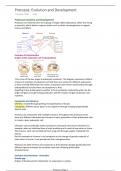
Protozoa evolution and development
Explore the origins and evolutionary adaptations of protozoa, including key events that shaped their diversity and classification. Understand the various forms and structures of protozoa, from flagellates to amoeboids, and their ecological roles. Gain insights into the life cycles of protozoa, including asexual and sexual reproduction, and the environmental factors that influence their development.
- Package deal
- Class notes
- • 6 pages •
Explore the origins and evolutionary adaptations of protozoa, including key events that shaped their diversity and classification. Understand the various forms and structures of protozoa, from flagellates to amoeboids, and their ecological roles. Gain insights into the life cycles of protozoa, including asexual and sexual reproduction, and the environmental factors that influence their development.
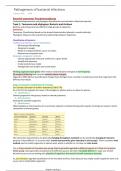
Pathogenesis of bacterial infections
Learn about the various strategies employed by bacteria, including adherence, invasion, and colonization. Each mechanism is clearly explained with examples from clinically significant pathogens. Explore the specific traits that enhance a bacterium's ability to cause disease, such as toxins, enzymes, and surface proteins. Understand how these factors contribute to pathogenicity and the clinical implications of bacterial infections. Gain insights into the dynamic relationship between bac...
- Package deal
- Class notes
- • 33 pages •
Learn about the various strategies employed by bacteria, including adherence, invasion, and colonization. Each mechanism is clearly explained with examples from clinically significant pathogens. Explore the specific traits that enhance a bacterium's ability to cause disease, such as toxins, enzymes, and surface proteins. Understand how these factors contribute to pathogenicity and the clinical implications of bacterial infections. Gain insights into the dynamic relationship between bac...
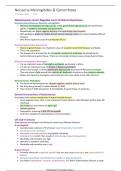
Neisseria meningitides and gonnorhea
Explore the taxonomy, morphology, and biochemical properties of Neisseria meningitidis and Neisseria gonorrhoeae, highlighting their unique characteristics that distinguish them from other bacterial pathogens. Gain insights into the mechanisms of infection for both bacteria, including the virulence factors that enable them to evade the host immune system, cause disease, and establish infection.
- Package deal
- Class notes
- • 5 pages •
Explore the taxonomy, morphology, and biochemical properties of Neisseria meningitidis and Neisseria gonorrhoeae, highlighting their unique characteristics that distinguish them from other bacterial pathogens. Gain insights into the mechanisms of infection for both bacteria, including the virulence factors that enable them to evade the host immune system, cause disease, and establish infection.
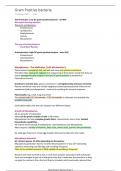
Gram positive bacteria
Explore the fundamental features that distinguish Gram-positive bacteria from Gram-negative bacteria, including cell wall structure, staining properties, and biochemical characteristics. Gain insights into the major genera of Gram-positive bacteria, including Staphylococcus, Streptococcus, Bacillus, and Clostridium, with descriptions of their morphology, physiology, and pathogenic potential. Understand the mechanisms of infection and virulence factors associated with key Gram-positive path...
- Package deal
- Class notes
- • 2 pages •
Explore the fundamental features that distinguish Gram-positive bacteria from Gram-negative bacteria, including cell wall structure, staining properties, and biochemical characteristics. Gain insights into the major genera of Gram-positive bacteria, including Staphylococcus, Streptococcus, Bacillus, and Clostridium, with descriptions of their morphology, physiology, and pathogenic potential. Understand the mechanisms of infection and virulence factors associated with key Gram-positive path...
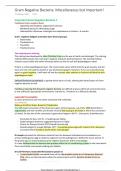
Gram negative bacteria
Learn the distinguishing features of gram-negative bacteria, including their unique cell wall structure, which influences their staining properties and pathogenicity. Explore important gram-negative bacterial genera such as Escherichia, Salmonella, Pseudomonas, and Neisseria, along with their clinical significance and roles in human health.
- Package deal
- Class notes
- • 4 pages •
Learn the distinguishing features of gram-negative bacteria, including their unique cell wall structure, which influences their staining properties and pathogenicity. Explore important gram-negative bacterial genera such as Escherichia, Salmonella, Pseudomonas, and Neisseria, along with their clinical significance and roles in human health.
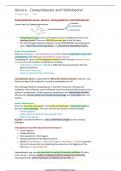
Campylobacter and Helicobacter
Understand the morphology, physiology, and genetic makeup of Campylobacter and Helicobacter. Learn about their unique characteristics, growth requirements, and metabolic pathways. Explore the mechanisms of pathogenesis for both genera, including virulence factors and how these bacteria evade host defenses. Gain insight into the diseases associated with each, such as gastroenteritis from Campylobacter jejuni and peptic ulcers from Helicobacter pylori.
- Package deal
- Class notes
- • 3 pages •
Understand the morphology, physiology, and genetic makeup of Campylobacter and Helicobacter. Learn about their unique characteristics, growth requirements, and metabolic pathways. Explore the mechanisms of pathogenesis for both genera, including virulence factors and how these bacteria evade host defenses. Gain insight into the diseases associated with each, such as gastroenteritis from Campylobacter jejuni and peptic ulcers from Helicobacter pylori.
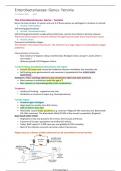
Enterobacteriaceae genus - Yersinia
Detailed exploration of Yersinia morphology, structure, and classification within the Enterobacteriaceae family. Insight into the mechanisms of infection, virulence factors, and the host immune response to Yersinia infections. Comprehensive discussion on the symptoms, diagnosis, and treatment options for infections caused by Yersinia.
- Package deal
- Class notes
- • 4 pages •
Detailed exploration of Yersinia morphology, structure, and classification within the Enterobacteriaceae family. Insight into the mechanisms of infection, virulence factors, and the host immune response to Yersinia infections. Comprehensive discussion on the symptoms, diagnosis, and treatment options for infections caused by Yersinia.
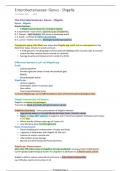
Enterobactericeae genus shigella
Explore the four main species—Shigella dysenteriae, Shigella flexneri, Shigella boydii, and Shigella sonnei—along with their unique characteristics. Learn about the transmission routes of Shigella, highlighting its infectious nature and public health significance. Understand how Shigella invades intestinal epithelial cells, the role of virulence factors, and the resulting inflammatory response.
- Package deal
- Class notes
- • 2 pages •
Explore the four main species—Shigella dysenteriae, Shigella flexneri, Shigella boydii, and Shigella sonnei—along with their unique characteristics. Learn about the transmission routes of Shigella, highlighting its infectious nature and public health significance. Understand how Shigella invades intestinal epithelial cells, the role of virulence factors, and the resulting inflammatory response.
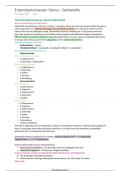
Enterobactericeae genus - Salmonella
Explore the morphology, serotypes, and classification of Salmonella species, including S. enterica and S. typhi. Gain insight into the modes of transmission, reservoirs, and global public health significance of Salmonella infections. Detailed explanation of how Salmonella invades the host, its virulence factors, and the immune response it triggers.
- Package deal
- Class notes
- • 3 pages •
Explore the morphology, serotypes, and classification of Salmonella species, including S. enterica and S. typhi. Gain insight into the modes of transmission, reservoirs, and global public health significance of Salmonella infections. Detailed explanation of how Salmonella invades the host, its virulence factors, and the immune response it triggers.
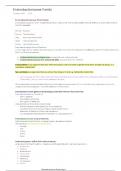
Enterobacteriaceae Family
Understand the defining features of Enterobacteriaceae, including their Gram-negative structure, facultative anaerobic nature, and metabolic diversity. Detailed coverage of the most common infections caused by this bacterial family, from gastroenteritis to urinary tract infections, pneumonia, and septicemia.
- Package deal
- Class notes
- • 3 pages •
Understand the defining features of Enterobacteriaceae, including their Gram-negative structure, facultative anaerobic nature, and metabolic diversity. Detailed coverage of the most common infections caused by this bacterial family, from gastroenteritis to urinary tract infections, pneumonia, and septicemia.
